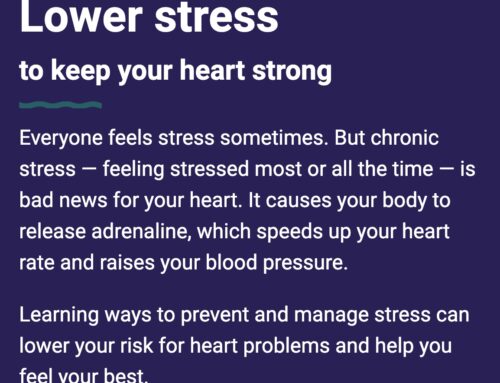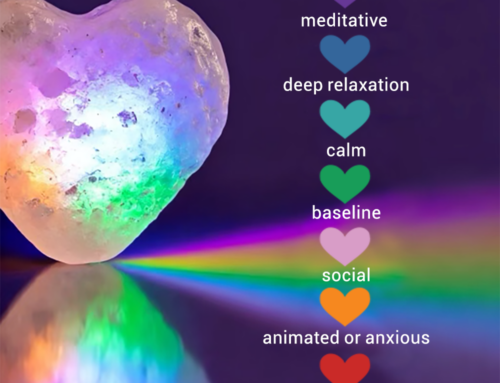Life’s demands can leave you feeling out of control, but with a few intentional practices, you can naturally reduce anxiety, improve your mental and physical health, and regain control over your stress response system. This 5-step biofeedback-supported mindfulness practice helps rewire your nervous system using the bio.calm app to guide your progress and support balance.
Step 1: Schedule Your “Time-Ins”
Creating structure is the foundation of this practice. Choose two times daily (e.g., 7 am and 5 pm) to pause for 10 minutes. Set reminders on your phone to prioritize your practice. Title your reminders in a an encouraging way, such as “Time in⌛️” or “Rebalance now” or “Time to Pause and Recenter” or “You’ve Got This—Pause and Breathe” or “Check In: How Are You Feeling?”
If you are a monk or an advanced meditator, you know exactly what to to. But if you are like the rest of us, you need some training wheels to help you stay centered. That’s why I developed the biocalm app and “smart” heart base. No matter how hard I tried, meditation did not work for my daily practice. I needed something visual that provided me with biofeedback to hold me accountable for my practice.
Once you receive your “with love my heart” kit, you are ready to begin your daily practice. The Smart Heart special bundle includes a blue tooth connectable heart rate monitor, bio.calm app directions and QR code, and set up instruction.
Time In:
1. Turn on your wearable heart rate monitor and open the bio.calm app (available only in the Apple App. Store).
2. Connect to the bio.calm app Heartbeat Tool. First time users, will take 90 seconds to set their baseline. Notice the color heart rate at the start of your practice. Click the “i” in the heartbeat tool to display the legend at any time
Legend: Green: At baseline. Pink, Orange, or Red: Above baseline. Light Blue, Blue, Purple: Below baseline.
3. Set Your Intention
Decide to shift your heart rate by at least one color as part of your session. This intention will guide your focus throughout the practice.
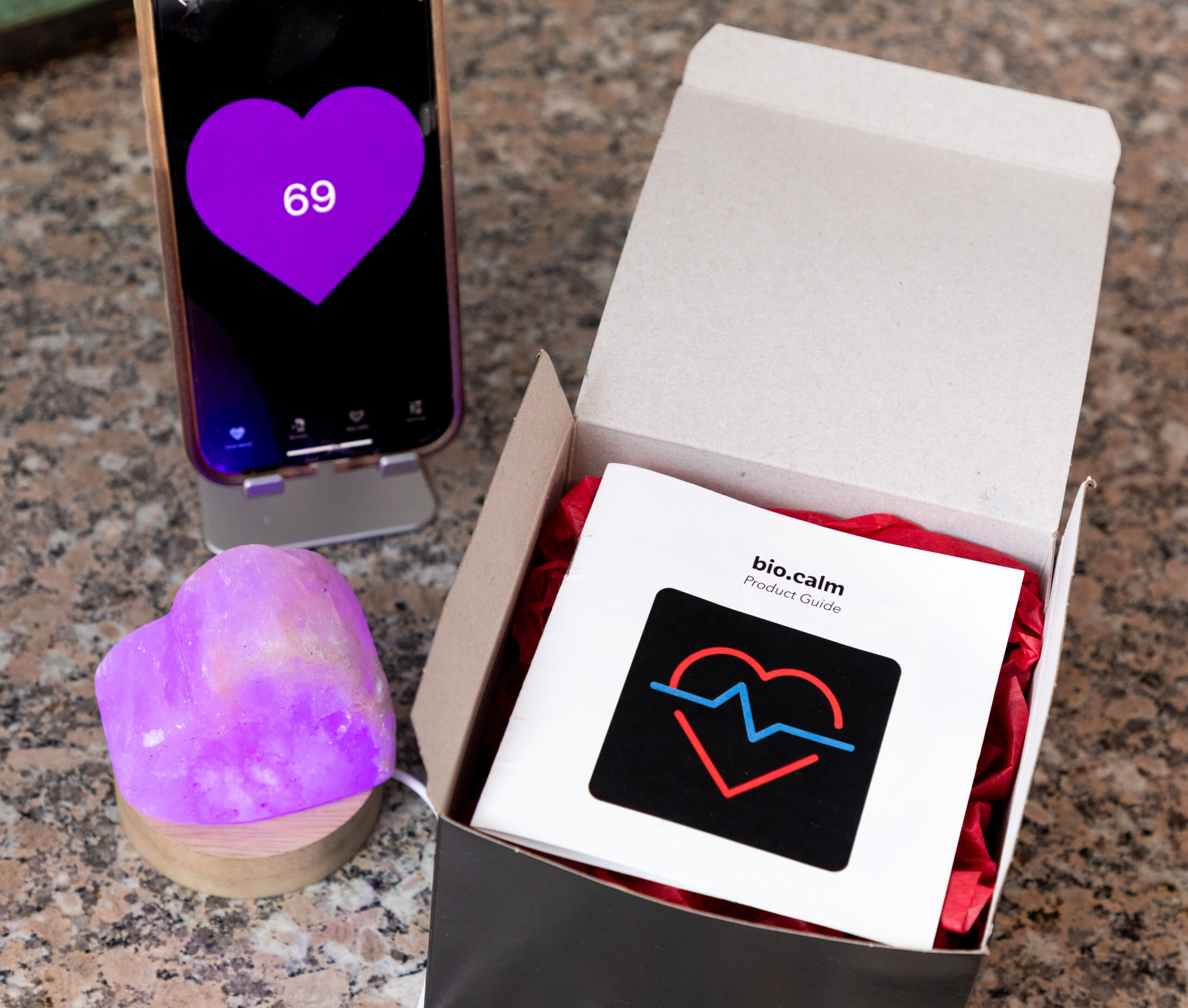
Our heart-shaped Himalayan salt crystal sits on a “smart” platform that connects to our app and any bluetooth connected heart rate monitor to display your real-time heartbeat.
Step 2: Connect with Your Senses
Start by taking a few minutes to ground yourself by tuning into your five senses. This practice helps calm the stress response system and brings you into the present moment:
- See: Notice colors, shapes, and light around you.
- Feel: Focus on textures, warmth, or pressure on your skin.
- Hear: Listen to the sounds around you, both near and far.
- Smell: What do you smell, sometimes essential oils such as Lavender help connect you with the present moment.
Quick Tip:
If your mind feels too busy to focus on all five senses, start small. Pick one sense to explore deeply, like hearing or touch, and gradually expand to include others.
By connecting with your senses, you’re not just calming your body—you’re creating space for clarity and balance to return.
Step 3: Focus on Your Breath
Your breath is a natural tool for resetting your nervous system.
- Observe Your Breathing
Before changing anything, notice your breathing pattern: Is it shallow, deep, fast, or slow? - Lengthen and Deepen
For 1–2 minutes, focus on deep belly breathing. Inhale slowly through your nose, allowing your belly to rise, and exhale fully through your mouth. - Release Thoughts
As thoughts come up, let them pass through without judgment. Return your focus to your breath and senses.
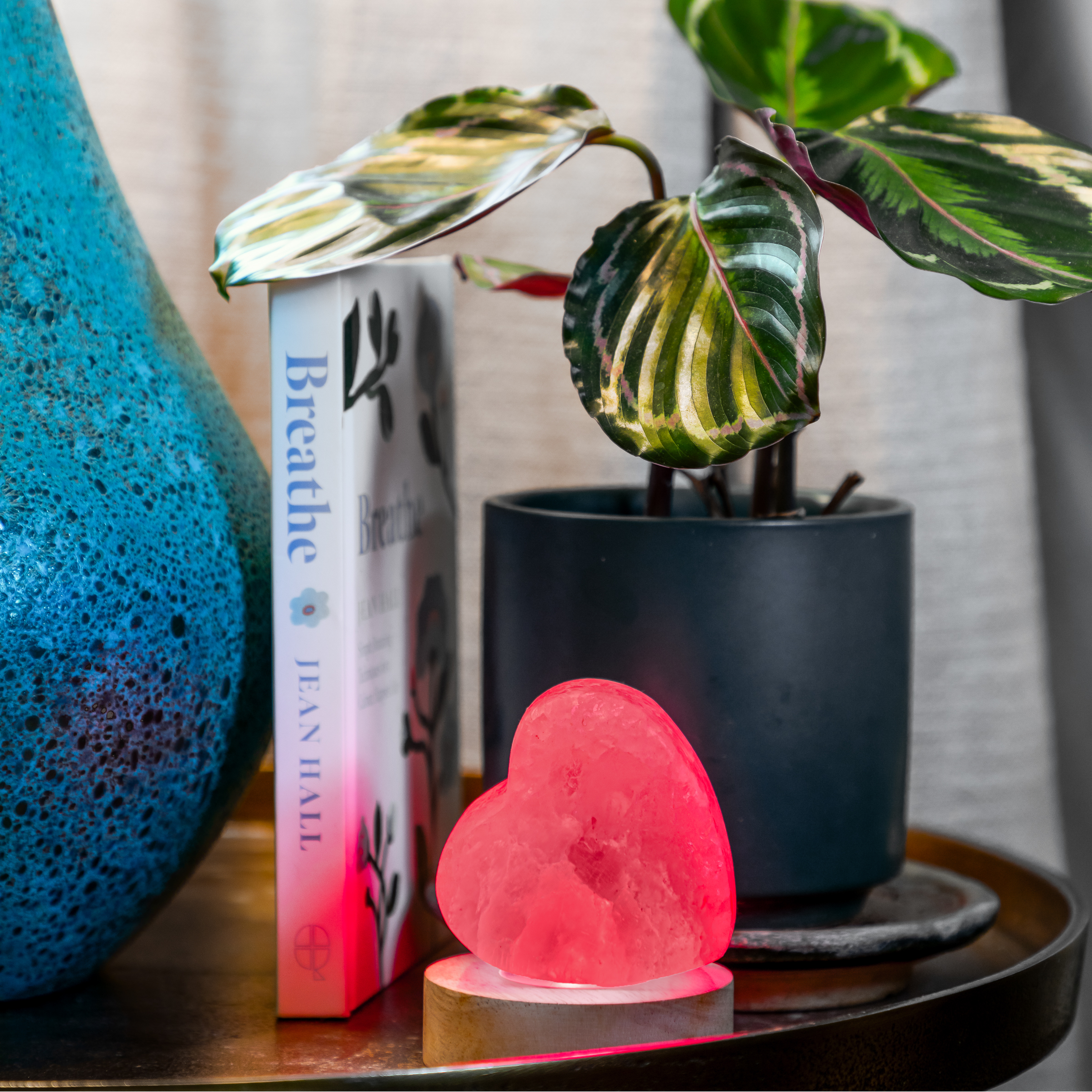
The biocalm app and our colorized crystal heart beat display help you to see your own stress throughout the day.
Step 4: Adjust Your Heart Rate
Use the bio.calm app to actively shift your heart rate based on your intention:
Option 1: Lower Your Heart Rate
- Use deep, controlled breathing.
- Visualize a calming scene, like a peaceful beach or forest.
- Aim to bring your heart rate closer to baseline (green) or below (blue).
Option 2: Raise Your Heart Rate
- Perform High-Intensity Interval Training (HIIT), such as jumping jacks or running in place.
- Sustain your heart rate at three levels above baseline (red) for 5 minutes.
- This practice builds resilience and strengthens your stress response system.
- Spend at least 3 minutes after lowering your heart rate using the breathing ball and centering your thoughts on the present moment.
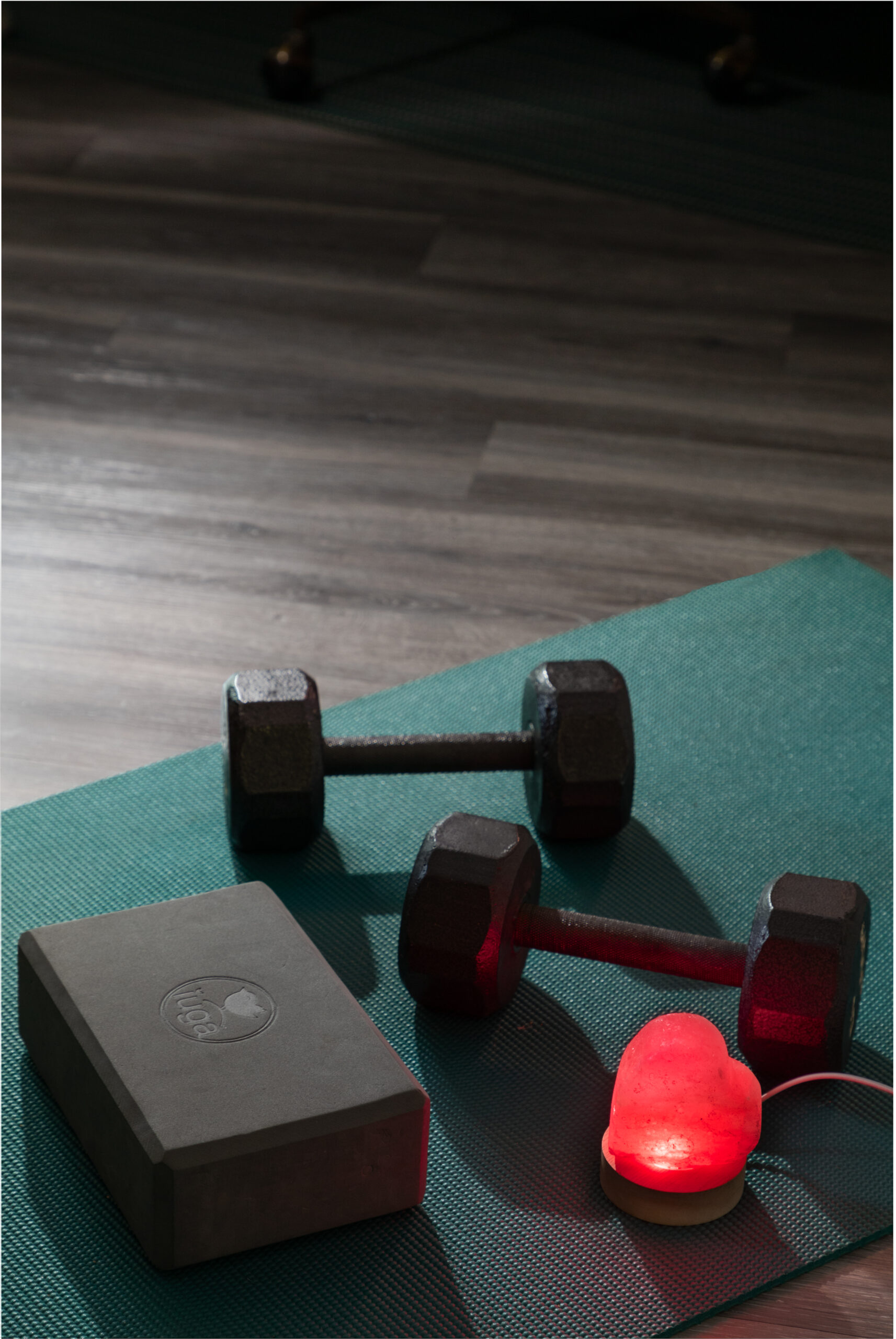
Use the media channels in the bio.calm app to raise your heart rate using short High-Intensity Interval training workouts. Then practice lowering and calming your heart back down to baseline through breathing our calming sensory-based media channels.
Step 5: Reflect and Set Intentions
As you complete your practice, take a moment to reflect on how you feel:
- Check the Heartbeat Tool
What color does it display now? Is this closer to or farther from baseline? Were you able to hold your heart rate at the desired level for at least 5 minutes? - Notice Your Body
Does your body feel more relaxed, energized, or balanced? - End with Gratitude
Place your hand over your heart and say, “You are safe.” Take one deep breath to seal your practice. - Set an Intention for the Day
Choose a positive focus for the rest of your day:
- “I will take better care of myself today.”
- “I will disconnect from ____ and spend time in a peaceful space.”
- “I will connect with others is a compassionate way.”
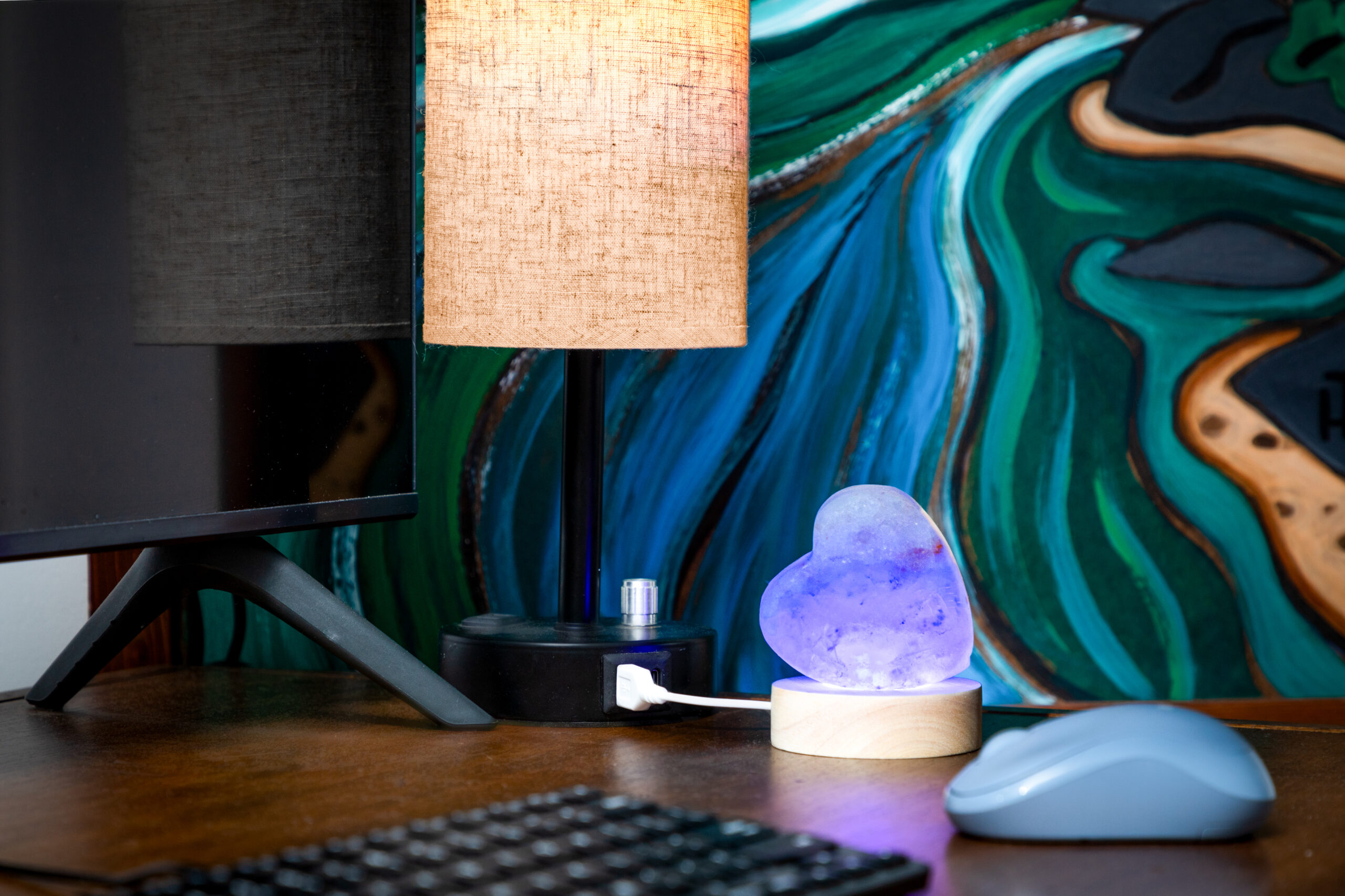
Why This Practice Works
The bio.calm app combines mindfulness with biofeedback to help you naturally reduce anxiety and improve your mental and physical health. By connecting with your senses, focusing on your breath, and adjusting your heart rate, you teach your body how to reset its stress response system. Over time, these practices help you regain control, build resilience, and find balance in your daily life.
When you focus on your senses, you anchor your mind to the present moment. Here’s how it helps:
✅ Calms the Neurobiology: Your sympathetic nervous system (the part responsible for the fight-or-flight response) begins to relax because you’re signaling to your body that the immediate environment is safe.
✅ Resets the Stress Response: Sensory grounding activates the parasympathetic nervous system (responsible for rest and recovery), helping reduce your heart rate, slow breathing, and lower cortisol levels.
✅ Stops Anxiety Spirals: By focusing on the “here and now,” you interrupt unhelpful thoughts about what has already happened or what might happen.
Take the First Step
Download the bio.calm app today and start your rebalancing journey. With consistent practice, you’ll feel calmer, more in control, and ready to take on whatever life brings.


